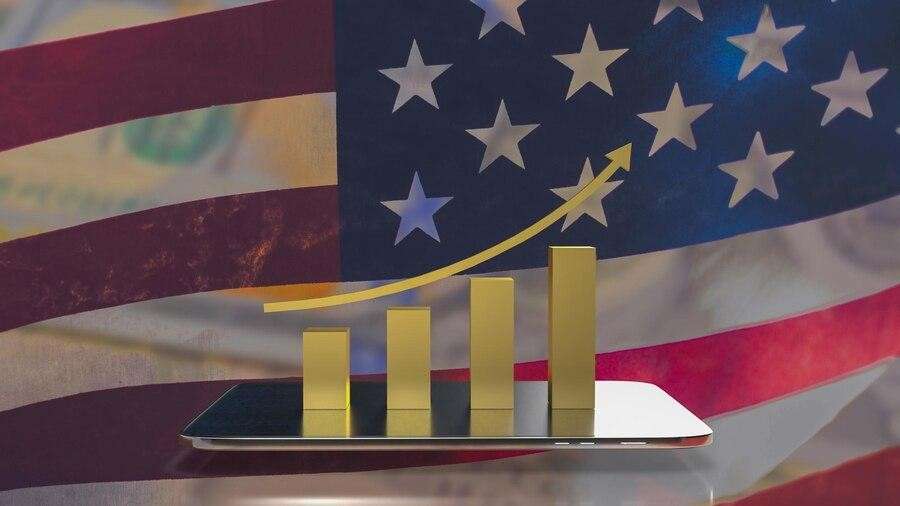The financial motor of the United States has long captivated and perplexed spectators. The country flourishes on advancement and private undertakings, trademarks of a advertiser economy. However, the government plays a critical role in controlling businesses, providing social security nets, and contributing in framework. This complex transaction leads to a central address: Is the United States an a advertise economy or a blended economy?
The Allure of the Market: Freedom and Efficiency
At its center, the American financial framework inclines intensely on the standards of a showcase economy. This framework emphasizes:
Private Ownership: Â Businesses and assets are overwhelmingly claimed and controlled by people and firms, not the state. This incentivizes competition, advancement, and risk-taking as business visionaries endeavor for benefit.
Supply and Demand: Â Prices are decided by the interaction of supply (what makers offer) and request (what buyers crave). This energetic allotment of assets points for effectiveness, with products and administrations delivered in amounts buyers are willing to pay for.
Constrained Government Intervention: Â The government for the most part dodges straightforwardly controlling generation or setting costs. Its essential part is to set up a legitimate system that cultivates reasonable competition and ensures property rights.
This market-driven approach has fueled the U.S. economy’s dynamism and development. It has cultivated a culture of enterprise, driving to a steady stream of advancements that have changed businesses and moved forward lives. The adaptability of the showcase permits businesses to adjust rapidly to changing shopper inclinations, guaranteeing a steady stream of unused products and administrations.
Be that as it may, a simply free showcase can lead to awkward nature and social issues.
The Realities of Intervention: The Public Sector Steps In
Whereas the U.S. grasps advertise standards, it’s not a free-for-all. The government mediates in a few vital ways:
Regulation: Â To ensure buyers and guarantee reasonable competition, the government sets up controls for businesses like fund, healthcare, and utilities. This guarantees item security, avoids imposing business models, and cultivates a level playing field for businesses.
Social Welfare Programs: Â Recognizing that advertising alone may not address destitution and disparity, the government gives social security nets like Social Security, Medicare, and unemployment benefits. These programs offer a fundamental level of security for defenseless populaces and offer assistance fortify the economy by putting acquiring control in people’s hands.
Open Goods: Â The government gives basic open products and administrations that the showcase might not proficiently convey on its claim. These incorporate national defense, framework (streets, bridges), and essential inquire about.
This government intercession makes a blended economy, where showcase forces and open arrangement associated to realize social and financial objectives.
Finding the right Balance: Debates and Challenges
The suitable part of government within the U.S. economy could be a subject of progressing wrangles. Advocates of free markets contend that over the top government interference smothers advancement and financial development. They accept the advertising is self-correcting and can distribute assets most proficiently.
On the other hand, advocates for a more grounded social security net contend that the advertise can lead to critical salary imbalance and take off a few citizens behind. They accept the government incorporates a duty to guarantee a reasonable conveyance of riches and give openings for all.
The challenge lies in finding the correct adjust between these two competing powers. The U.S. framework has verifiably inclined more towards the advertise side, with a moderately littler social security net compared to a few European nations. Be that as it may, financial downturns and social turmoil have periodically led to calls for expanded government intervention.
The Evolving Landscape: The future of the U.S. Economy
The U.S. financial framework isn’t inactive. It has always adjusted to changing circumstances, from the rise of unused advances to globalization. Here are a few key patterns that will likely shape end of the of the U.S. economy:
Innovative Change: Â Automation and fake insights are changing businesses, possibly uprooting laborers and requiring modern skillsets. The government may got to play a part in retraining specialists and giving back for those affected by innovative headways.
Globalization: Â The U.S. economy is profoundly interwoven with the global marketplace. Exchange understandings and worldwide competition will proceed to impact household arrangements and directions.
Wage Inequality: Â The hole between wealthy and destitute within the U.S. has been extending. The wrangle about over the part of government in tending to this issue will likely heightening.
As these patterns unfurl, the U.S. will have to be carefully explore the adjust between advertise powers and government mediation. The objective will be to cultivate a energetic and innovative economy that gives openings for all whereas guaranteeing a level of social security and steadiness.
Conclusion: A Complex and Dynamic System
The United States cannot be flawlessly categorized as absolutely a showcase economy or a blended economy. It’s a complex framework that joins components of both. The quality of the U.S. economy lies in its versatility and its capacity to discover the proper adjust between person opportunities and collective well-being.










